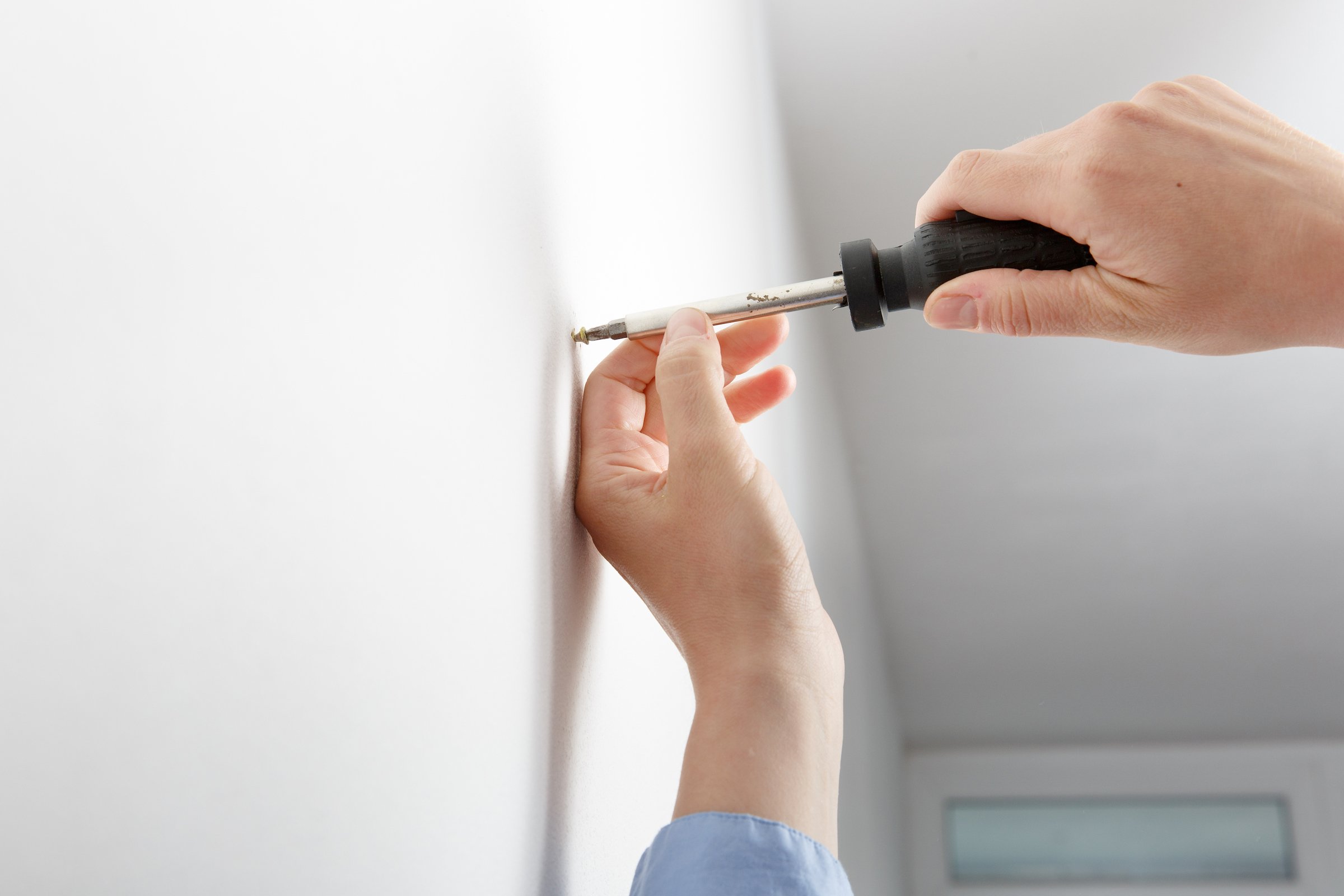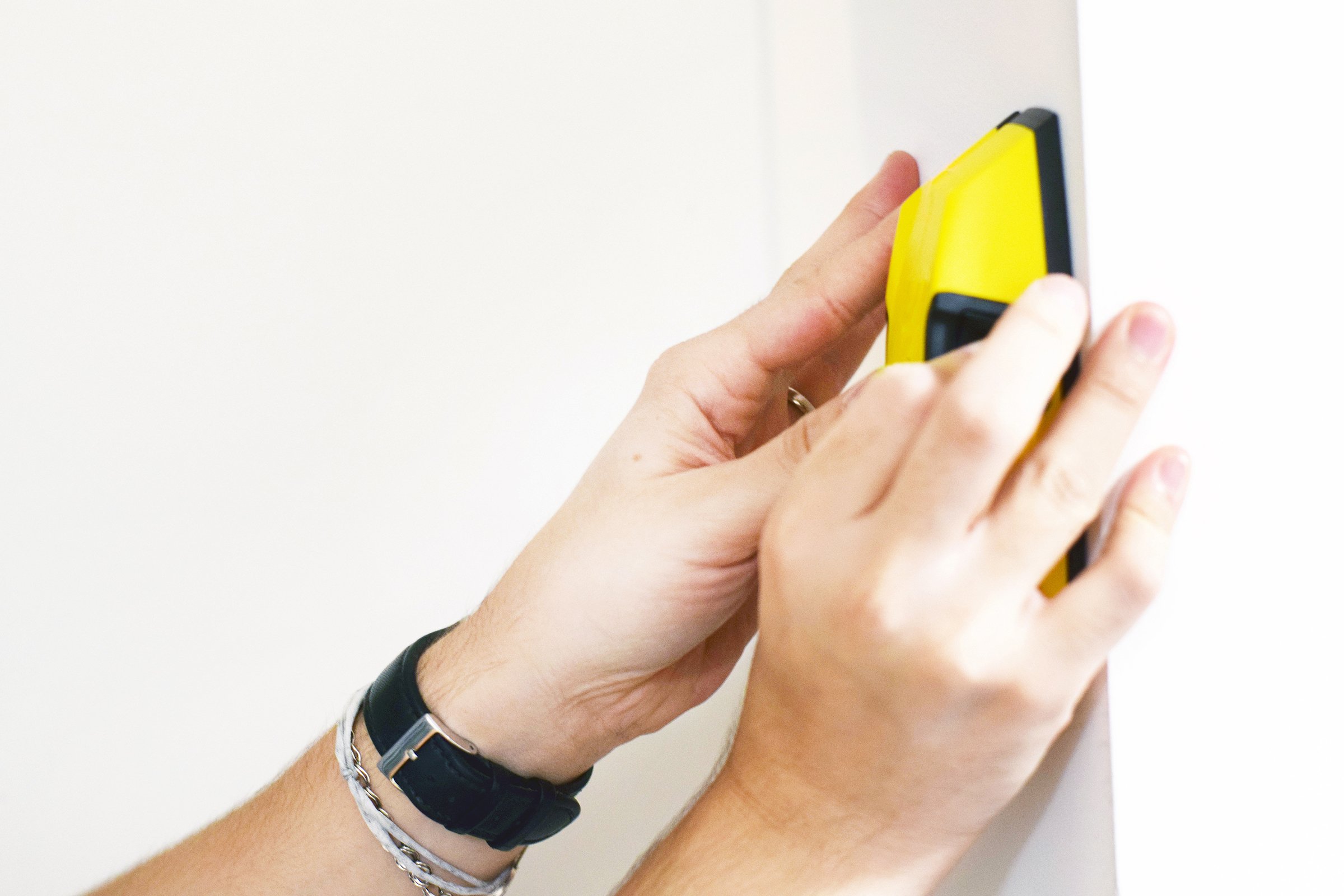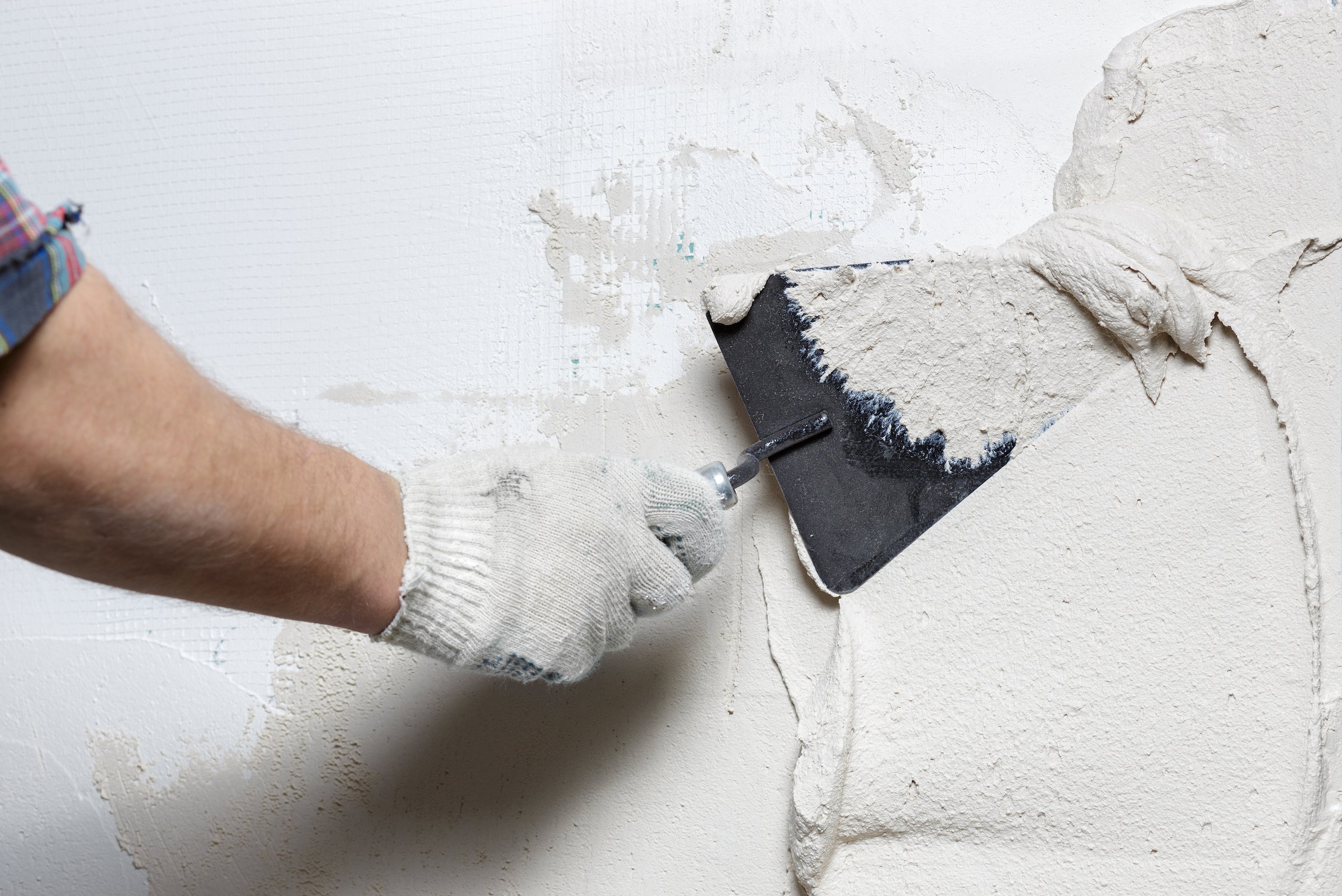If you don’t hang a heavy item on the wall properly, there’s a high chance that it’ll fall. A heavy television, piece of art, or shelf could seriously damage your home or injure your family and pets on the way down.
In normal cases, you should use a stud to hang a heavy object on the wall, but oftentimes it can be difficult to locate your studs, they aren’t a standard distance from each other, or you have a unique wall type that doesn’t have studs in it at all.
That’s why we've put together step-by-step instructions on how to hang heavy objects on different types of walls, so you won’t have to worry about them falling down.
First, Identify Your Wall Type to Find the Proper Hanging Technique
 Like most, you probably started out hanging your favorite band posters or team pennants on your bedroom walls with pushpins. Then, as you got older, you likely graduated to fun framed photos, light kits, or shelving precariously held in place by mismatched nails you found lying around the house.
Like most, you probably started out hanging your favorite band posters or team pennants on your bedroom walls with pushpins. Then, as you got older, you likely graduated to fun framed photos, light kits, or shelving precariously held in place by mismatched nails you found lying around the house.
Now, you don’t have to (and shouldn’t) pick up your hammer, grab a random nail, and cross your fingers that a heavy picture frame, television, shelving unit, or other bulky item will stay secure.
Depending on the age of your home and the locality, your walls may consist of different types of materials. Drywall, plaster, and masonry are the typical wall types, but you may also be hanging objects on hollow-core doors or thin wood paneling.
You'll need to determine what kind of wall you have and how much your object weighs before choosing the proper hanging technique.
Here’s how to figure out what type of wall you have:

- Is my wall made of drywall or plaster? It can be tricky to tell the difference between drywall and plaster, since at first glance they look just about identical. The easiest way to tell the difference between the two is to grab a pushpin and find a hidden spot. If the pushpin goes into the wall easily, you’re working with drywall. If it feels next to impossible to stick your pushpin in the wall, you’ve got plaster walls. A good rule of thumb is that if your home was built or remodeled in the last 50 years, you probably have drywall.

- What is a masonry wall? The word masonry is used to describe walls made of brick or stone. While it should be pretty clear if you have walls made of brick or stone, you may be working with brick or brick veneer walls. In short, solid brick walls are load-bearing and feature two rows of brick. Brick veneer walls are non load-bearing and only feature one row of bricks.

- What are hollow core walls, and do I have them? Hollow-core walls refer to precast concrete slabs. Concrete walls, if painted, will feel hard and sturdy to the touch, and won’t give at all to the pushpin test.
Have your wall type? Great! Let’s get those heavy objects hung properly so you can enjoy your space.
How to Hang Heavy Objects on Drywall
 Learning how to hang heavy objects on drywall will probably be the best place to start as this is the most common wall material. While providing a seemingly durable surface, the crushed gypsum plaster held together with cardboard is actually only about a half-inch thick and won't hold your heavy objects without some extra help.
Learning how to hang heavy objects on drywall will probably be the best place to start as this is the most common wall material. While providing a seemingly durable surface, the crushed gypsum plaster held together with cardboard is actually only about a half-inch thick and won't hold your heavy objects without some extra help.
Although popular and inexpensive, plastic hollow fasteners shouldn't be used for anything more than a few pounds. Drywall is too soft to hold the plug in place.
The Proper Way to Hang Objects 10 to 25 Pounds
Instead, use a threaded drywall anchor to securely hold objects between 10 and 25 pounds such as heavy picture frames, bulletin boards, mirrors, and light-weight shelving. No power tools are required for this self-drilling fastener. Use a screwdriver to screw it in until it's flush with the wall. You can also use a hammer to tap it in tight.
How to Hang Objects on Drywall that Weigh 25 to 50 Pounds
Molly bolts can be used to hold heavy loads between 25 and 50 pounds. Pointed versions can be tapped into place with a hammer while non-pointed styles use a drilled installation hole. Tap or drill and tap the round flange flush with the wall, turn the screw to expand and secure the slotted sleeve on the back side of the drywall.
The Best Way to Hang Heavy Items on Drywall? Find a Stud.
 Drywall is generally attached to vertical studs (2x4 or 2x6 boards) spaced 16" apart. When possible, it's best to find a stud to support your heaviest objects. A magnetic stud finder works best for locating the studs behind the drywall. When you move the stud finder over the wall, the magnet will react every time it passes over a nail. Here’s how to drill into a stud:
Drywall is generally attached to vertical studs (2x4 or 2x6 boards) spaced 16" apart. When possible, it's best to find a stud to support your heaviest objects. A magnetic stud finder works best for locating the studs behind the drywall. When you move the stud finder over the wall, the magnet will react every time it passes over a nail. Here’s how to drill into a stud:
- Mark the wall with a pencil and move the stud finder approximately 16" (or up to 24") to the right or left to find the next stud.
- Using a small drill bit, drill into the first mark. When you meet resistance after drilling 1/2 inch, you've hit the stud.
- Back out that bit and insert one slightly smaller than the screw you intend to use.
- Use a level to line up the second mark at the same height.
- Repeat the process and secure the screws directly to the studs.
How to Hang Heavy Objects on Plaster
 Although plaster walls are thicker and denser than drywall, they're also hollow so require heavy-duty fasteners to secure weightier objects. Plaster is more easily damaged than drywall, so it's recommended to tap into the supporting studs where possible.
Although plaster walls are thicker and denser than drywall, they're also hollow so require heavy-duty fasteners to secure weightier objects. Plaster is more easily damaged than drywall, so it's recommended to tap into the supporting studs where possible.
Use a magnetic stud finder as noted for drywall applications and hanging your television bracket or large mirror will be an easier task.
Use Plastic Toggle Bolts to Hold Objects Between 10 and 25 Pounds
First, drill a hole large enough to fit the plastic toggle bolt. Then, position the item to be hung over the bolt, insert the toggle and tighten it down.
Use Non-Pointed Molly Bolts For Objects Over 20lbs
Non-pointed molly bolts that require a drilled installation hole work best on plaster walls where there are no studs. They are strong enough to hold objects over 20 pounds with ease.
You’ll drill and tap the round flange flush with the wall, turn the screw to expand and secure the slotted sleeve on the back side of the plaster wall.
Be careful not to over tighten the screw as it can pull right through the plaster wall.
How to Hang Heavy Objects on Masonry
 As you might imagine, solid walls like concrete, brick and tile need special techniques to hang objects. Lighter items up to 10 pounds can be installed using a plastic wall plug. You'll need to use a powerful drill with masonry drill bits that gradually size up to match the size of the wall plug. Insert the plastic wall plug and insert the metal screw. The plug will expand as you tighten the screw.
As you might imagine, solid walls like concrete, brick and tile need special techniques to hang objects. Lighter items up to 10 pounds can be installed using a plastic wall plug. You'll need to use a powerful drill with masonry drill bits that gradually size up to match the size of the wall plug. Insert the plastic wall plug and insert the metal screw. The plug will expand as you tighten the screw.
When installing heavier objects over 25 pounds into masonry, a lead wall plug is recommended. These work similar to the plastic type but are less likely to break.
How to Hang Heavy Objects on Hollow-Core
 Hollow-core doors and 1/4" thick paneling can be easily damaged so miniature molly bolts are best. Tap-in plastic, pointed styles can be installed with a hammer to hold less than 10 pounds. Use non-pointed miniature molly bolts and drill for heavy loads between 25 and 50 pounds. These work best for wall-mounted mirrors, bulletin boards, towel racks, and shelving.
Hollow-core doors and 1/4" thick paneling can be easily damaged so miniature molly bolts are best. Tap-in plastic, pointed styles can be installed with a hammer to hold less than 10 pounds. Use non-pointed miniature molly bolts and drill for heavy loads between 25 and 50 pounds. These work best for wall-mounted mirrors, bulletin boards, towel racks, and shelving.
When in Doubt, Call in the Professionals
While you may be comfortable hanging most items in your home as a DIY project, when it comes to hanging heavy items, sometimes it’s best to call in the pros. To find a top pro to help, the best way is to ask around for recommendations or do a simple search on Yelp. Opt for a company that’s been in the business for a long time and has rave reviews.
If the heavy object in question happens to be a television, Puls can help. Our technicians have the skills, tools, equipment and experience to hang your TV on any wall material, conceal the cables, and connect all your peripherals so you can feel confident it's secure and working right.





